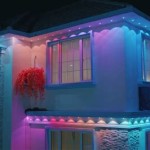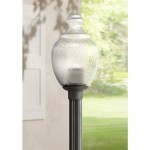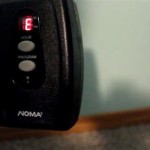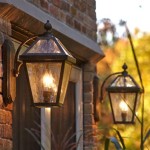How to Connect Outdoor Extension Cords
Outdoor extension cords are essential for powering tools and appliances in your yard, garden, or during outdoor events. However, connecting them safely and effectively requires understanding the proper procedures and safety precautions. This article will outline the steps involved in connecting outdoor extension cords, emphasizing safety measures and best practices.
Choosing the Right Extension Cord
Selecting the appropriate extension cord is crucial for safe and efficient operation. Consider the following factors:
-
Gauge (AWG):
The gauge refers to the thickness of the wire, impacting the cord's ampacity (maximum current carrying capacity). Higher gauge numbers (e.g., 14 AWG) indicate thinner wires, suitable for low-wattage devices. Lower gauge numbers (e.g., 10 AWG) signify thicker wires, capable of handling higher power demands. Consult the appliance's power rating and choose a cord with a gauge that can safely handle the load. -
Length:
Select a cord that is long enough to reach the desired location without excessive strain or tension. Avoid overextending the cord, as it can increase resistance and pose a safety hazard. -
Material:
Outdoor extension cords are typically made of weather-resistant materials like rubber or PVC. Look for cords with a "W" on the label, signifying they are suitable for wet conditions. -
Type of Connector:
Ensure the plugs and receptacles on the extension cord are compatible with the devices you intend to use.
Always consult the manufacturer's instructions and specifications for the extension cord before using it. Ensure the cord is in good condition, without any signs of damage, cracking, or fraying.
Connecting Extension Cords Safely
Connecting outdoor extension cords requires careful attention to safety measures to prevent electrical hazards and accidents. Follow these steps:
-
Unplug all devices:
Disconnect all appliances and devices from the power source before connecting the extension cord. -
Inspect the cord:
Carefully examine the extension cord for any damage or wear. Look for cracks, frayed wires, or loose connections. Do not use a damaged cord. -
Match the plugs and receptacles:
Ensure the plugs and receptacles on the extension cord and devices are compatible. Do not force connections or use adapters. -
Connect the extension cord:
Insert the plug of the extension cord into a grounded outlet. Ensure the outlet is rated for the ampacity of the cord. -
Connect devices:
Plug the appliance or devices into the extension cord's receptacle. Ensure the connection is secure.
While connecting extension cords:
- Avoid running cords across pathways or areas where they can be tripped over. Keep cords clear of traffic and obstacles.
- Do not overload the extension cord. Never connect multiple high-wattage appliances to a single extension cord.
- Avoid using extension cords in wet conditions or near water sources. Use a ground fault circuit interrupter (GFCI) for added protection in damp areas.
- Disconnect the extension cord from the power source when not in use.
Connecting Multiple Extension Cords
Connecting multiple extension cords can be necessary for reaching greater distances. However, doing so safely requires careful consideration. Here are some guidelines:
-
Use a single extension cord:
If possible, use a single long extension cord instead of connecting multiple shorter cords together. This minimizes the risk of overloading and electrical hazards. -
Match the gauge:
Ensure the gauge of each extension cord is compatible. Using a thinner cord in the chain can lead to overheating and potential fire hazards. -
Avoid excessive connections:
Limit the number of extension cords connected in series. Avoid connecting more than three extension cords together to maintain a safe current flow. -
Inspect all connections:
Thoroughly inspect each connection point for any signs of damage or overheating.
Always exercise caution when connecting multiple extension cords. Consult an electrician for guidance if you are unsure about proper practices.

How To Tell If An Extension Cord Is Safe Use Outdoors

How To Safely Use Extension Cords Outside Fusion Electric

Extension Cord And Power Strip Safety

Outdoor Extension Cord Safety Tips

Nesm Extension Cord Safety Blog 𝗘𝘅𝗽𝗿𝗲𝘀𝘀 𝗘𝗹𝗲𝗰𝘁𝗿𝗶𝗰𝗮𝗹 𝗦𝗲𝗿𝘃𝗶𝗰𝗲𝘀

When An Extension Cord Is For Outdoor Use Mr Electric

Indoor And Outdoor Extension Cords Power Cord

Best Outdoor Extension Cords Guide In 2024 The Drive

Twist And Seal Cord Protect Outdoor Extension Cover Plug Protection Black Tscp Blk Bl The Home Depot

How To Tell If An Extension Cord Is For Outdoor Use Nichemarket
Related Posts







